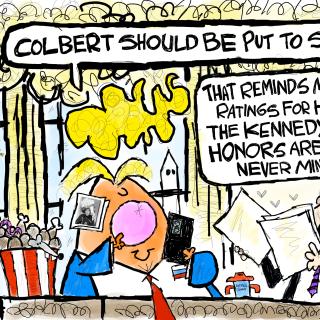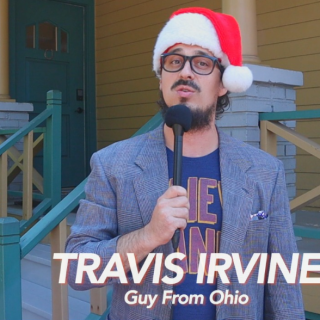Advertisement
I have frequently said to a friend who was born and reared in Jim Crow Nashville that Donald Trump is the spawn of George Wallace, only taller. Like Trump, Wallace was bombastic, rude and in perpetual motion. Pugnacious and argumentative, he also wore a permanent sneer as he railed against the elites whom he imagined were looking down on him, the son of a working class family. The term “the politics of rage” was invented for George Wallace. But unlike Trump who came to politics fairly late in life, politics grabbed Wallace by the lapels at a young age, and refused to let go.
Kennedy, the second of four children, is the daughter of Wallace and his first wife, Lurleen, the first female governor of Alabama, who died in office in 1968. She wrote this book in part to explain her father to her young son, Burns, who while visiting the Martin Luther King, Jr. National Historic Site and Museum saw photos of the 1963 Birmingham crusade, the bomb ravaged 16th Street Baptist Church, and his grandfather standing in the schoolhouse door to block two black students from entering the University of Alabama. He asked her “Why did Paw Paw do those things to other people?” Even as she live through those times knowing her father was wrong, she never had the courage to say so. The Broken Road is her apology for studiously looking away from the harm her father visited on Black Alabamians and not speaking out against him.
Early in the book, she describes a man who had served on the Board of Trustees at Tuskegee Institute, the college founded by the former slave, Booker T. Washington. By all accounts he was dedicated to the advancement of Tuskegee, and studiously looked out for its best interests–something that just doesn’t square with his racist bombast. (Or maybe it does. Think separate and unequal.) Describing her father and his character, she said “Yet this was who he was. . .and then was not. For Daddy was willing to bend his moral universe toward power. As I would learn again and again in sometimes painful ways, he was ready to compromise not only himself but his family for the dream he had since he was a child–to be the governor of Alabama.”
Like many young men in his generation who became involved in politics during the 1950s and 1960s, the third George Wallace served in the military during World War II. In July of 1945 the flight engineer drew the mission of bombing Fukui, Japan. The plane Wallace was piloting got caught in a thermal updraft, reaching an altitude of 18,000 feet in a few seconds before stalling and plummeting toward the water. Miraculously Wallace was able to restart one of the engines, regain altitude and with barely enough fuel, return home, avoiding a sea landing. He would refuse to talk about that day and his final mission which saw him cross the flight path of the Enola Gray on its way to Hiroshima.
Having served as a circuit court judge and state representative, Wallace threw his hat in the ring in 1958 to run for governor. He concentrated on promoting education and building roads, while at the same time his opponent, John Patterson, Alabama’s attorney general, electrified crowds by promising to keep Alabama white. Patterson harassed the National Association for the Advancement of Colored People (NAACP) and sued a black group called the Tuskegee Alabama Civic Association that had started an economic boycott in protest of racist white officials and groups in the state who were working hard to deny black Alabamians the vote. Wallace lost, and it was then he was said to have uttered one of his most famous lines: “ I was outniggered by John Patterson, and I’ll tell you here and now, I will never be outniggered again.” Later, Wallace vehemently denied having said that, assuring anyone who would listen that he would have never have described African Americans as niggers. But the next time he ran for governor, he dropped his populist ideas and embraced race baiting. This time he won.
Kennedy marches briskly through her growing up Wallace. If the Wallace family wasn’t illustrious, they were interesting. His father grew up in the small town of Clio, Alabama. His grandfather was well respected and had been a doctor in a town so poor that he often bartered his services. George Wallace II–they did not use the appellation of junior in the family–however was nothing like him, being as one of Kennedy’s brothers said “a man of indiscretion and perpetual drunkenness.” Wallace and his brothers were sometimes forced by their father to fight among themselves while the drunken man watched, often passing out before the fights were over. Those fights, along with his service as a legislative page, seemed to have well prepared Wallace for the life in politics that was ahead of him.
Kennedy makes no excuses for her father’s virulent racism, although growing up, she had difficulty reconciling her beloved father with the pugnacious figure she at times saw on the evening news. She describes him as an absentee father who drank and indiscreetly chased other women. In response to Wallace’s flagrant womanizing, her mother packed up Kennedy and her siblings and moved to Tuscaloosa to live with her parents. His brother Gerald convinced Wallace that there was no way a divorced man with four children could have a political career in Alabama. Suitably chastened, he returned to his wife and family. In 1962 he won the race for governor, and moved his family into the governor’s mansion and the national limelight.
In 1972 Wallace was making his third run for the presidency. At a campaign rally in Maryland, there was the crackle of shots, as there had been so many times before. Wallace was felled by a bullet that lodged in his spine. He spent the rest of his life paralyzed from the waist down and in extreme pain. While hospitalized, he had a number of visitors, including Ethel Kennedy, whose late husband Robert had clashed with Wallace over race in 1963 while serving as the attorney general in his brother’s administration. But according to his daughter, it was the visit by the black Congresswoman Shirley Chisholm that made the most profound impression on the governor. Kennedy said her father asked how the black community would see her visit. Chisholm dismissed his concern and said “I would not want this to happen to anyone.”
From then on her father began talking to her and his son-in-law about the period when he proudly and defiantly stood at the center of American politics. At first he was full of half truths and evasiveness about his role in the 1960s, but as time went on, he accepted responsibility for his actions. Flat on his back and paralyzed he admitted that his role as an uber racist had harmed America in general, and black Americans in particular. In 1979 Wallace arrived unannounced at Dexter Avenue Church where Martin Luther King, Jr., had preached so long ago. He apologized for the harm he had caused black people, and he asked for their forgiveness. When Wallace ran for the governorship a fourth and final time in 1982, he won the substantial support of the African American community.
In 2009 Kennedy found herself holding hands with the late Congressman John Lewis (D-GA), who was once again leading a group of black southerners across the Edmund Pettus Bridge. In 1965 he and others had been violently beaten and turned back by Alabama state troopers under the command of Governor George C. Wallace. In 2015, she made that same pilgrimage, this time holding the hand of Rev. Bernice King, the youngest child of the slain civil rights leader.
The Broken Road is an unflinching look by a loving but clear eyed daughter at her father, who was one of the most racist white public officials in American history. For her party, Kennedy dedicated herself to the hard work of racial reconciliation.Book Review: The Broken Road: George Wallace and a Daughter’s Journey to Reconciliation by Peggy Wallace Kennedy



